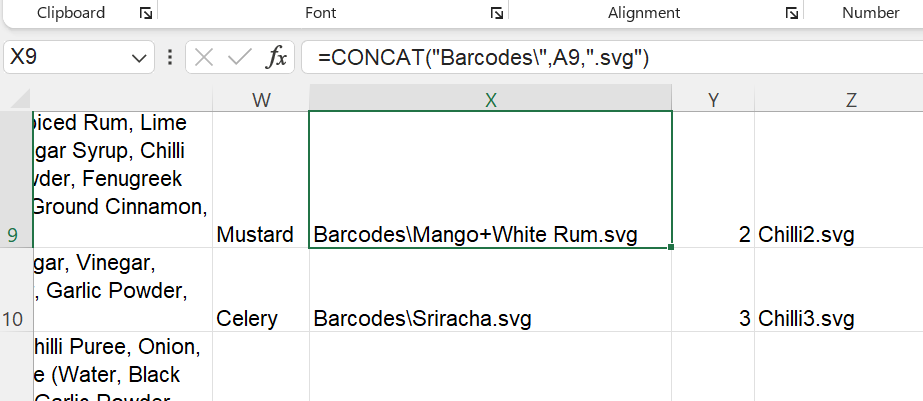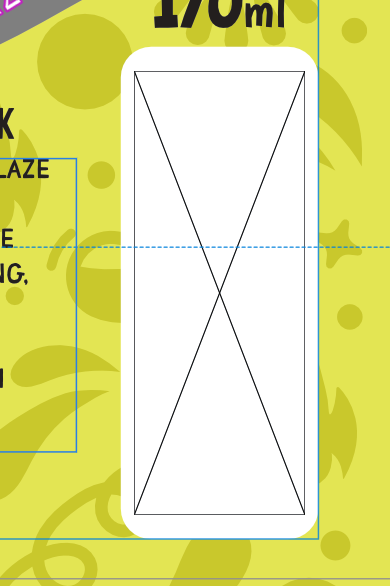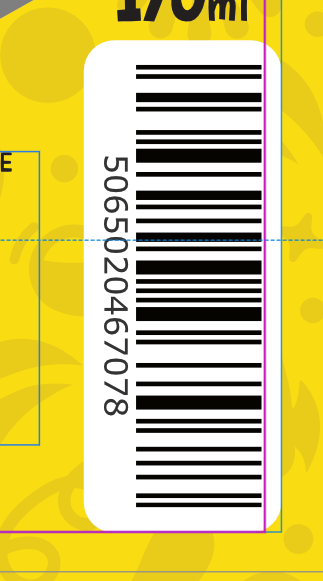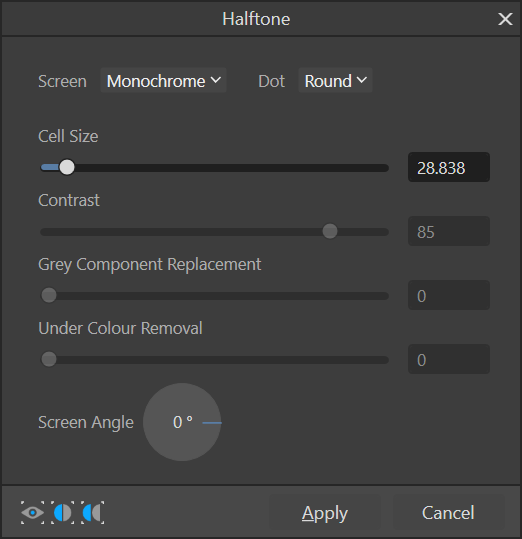-
Posts
403 -
Joined
-
Last visited
Everything posted by Paul Mc
-
Thanks so much, @lacerto you are a lifesaver. This was driving me crackers. I had completely forgotten about passthrough/interpret! I now have everything working correctly. You went to a lot of trouble to reproduce the effect and I appreciate the effort. Thank you. I no longer have an Adobe subscription so wasn't able to check the output preview but I'm reassured by your video that everything will work OK. The deadline was Friday but the printer has been gracious enough to stretch things until Monday if I could fix this. BTW, there was also an issue with 100%k blacks on text going the same way and this fixed that issue too. Thanks again and have a great weekend.
-
I'm working on a project where I create designs in Designer and then use a merge in Publisher to pull them all together into a multipage document. In the main this is working fine. This is a print project and all the elements are in CMYK using the same colour profile. Creating an element in Designer directly (I think) I get the correct colour, and the same for Publisher. However if I load a Designer created PDF image into a Publisher Picture Frame I get a slight colour shift. The same object inserted into the document directly as a curve works fine. Here's a sample of the colour effect that I'm seeing: All these "pinks" should be the same colour. The darker one is the correct I think. The original colour in AD is (3,95,51,10). Once it appears in the merged AP output file the upper left one is (4,91,44,9) and the lower right (4,91,45,9). I'm saving all the assets in PDF format with the colour profile of the document. Originally I used SVG files and found that these can't use CMYK colours (yet) so switched to PDFs in the hope that these would work. Static elements in the Master Page of the AP document created using this colour are fine and have the same colour in the output. It is the Picture Frames that have the issue. Can I assume that this is not due to this problem from a while ago? I've tried it with and without the option to embed ICC profiles with no change as well as experimenting with several other changes. I am completely lost as to why this is happening. I can't share files here as it is client work. The colour profile is PSO Coated v3 in case that is relevant. It wasn't installed by default and I had to download and install it for this project. I'm on Windows using version 2.4.2 in all programs. Please can you suggest anything I can try to identify what the cause of this difference is? Thanks.
-
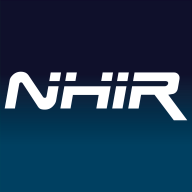
Printer requires a separate white layer in PDF
Paul Mc replied to Paul Mc's topic in Desktop Questions (macOS and Windows)
Thanks @DWright, I wasn't aware this was a feature of that format. Time to do some homework I think. -
Thanks David, but I'm not doing it this way. All the barcodes and other graphics are using well formed SVG files and they work fine apart from the one related to the one product in the set that has the + character in the name. I understand what you are saying here but it isn't the issue I'm dealing with. I am convinced the filename has been outlawed because of the plus character and doesn't try to load the image file. I might be wrong but I've had to move on because of deadlines and stuff. I can't afford to give this any more time. Sorry.
-
Believe it or not @Alfred I did read that page previously but disregarded that point because it was referencing FAT disk structures. It could be that Affinity have taken a conservative approach and just outlawed certain characters in filenames across the board? What is puzzling is that this looks like the software doesn't try to open the file (which is fine on NTFS). Perhaps it is an overzealous validation function.
-
Hi everyone, I'm preparing label artwork to go to print on clear film. The printer has asked for a separate white layer. This is pretty normal on film but my current job is very complicated. Essentially, the inks are translucent so everywhere in the design that it is not clear I need to print white (think of it like a paper layer) and then overprint with process colours to obtain an opaque result. I normally do a duplication of the artwork layers and merge all the content to create this plate. This is all doable with the tools in AD/AP but I'm thinking that, because of the complexity this time, the final file is going to be very difficult to edit as a lot of stuff will be duplicated and require synchronised editing should there be a need for any mods. Any thoughts, suggestions or workflows that you all use for this?
-
Hi @David in Яuislip Thank you for going to the trouble of testing this. That's reassuring if not a fix. In my case the + is part of a product name and I get the xlsx data from the client and that isn't going to change. I have tested this in a normal data field (not a filename) and it all works fine.
-
Hi @thomaso I'm not sure where MTU got their information from but no OS I know of outlaws the + character in filenames. Also, I'm familiar with interacting with Excel and there is a clear distinction between the formula mode of accessing a cell value and the evaluated mode. It could be that Excel is doing something that it's not been asked to do (e.g. stripping leading zeros etc.) and this is just one of those things that the MS devs know better than the user how things need to be done. A more intriguing thought is whether there is code in Affinity that allows for some kind of formula in this context. If not that would be a really cool addition! In any case I'm stuck with this at the moment and have decided (due to deadlines and pressure) that I need to work around it. For now I'm renaming all the graphics and editing all the spreadsheets to use minus instead.
-
I've data in a spreadsheet that is being used as a source for a data merge in Publisher. I also have a bunch of icons and other graphic files, some of which have a plus ('+') character in the name. These filenames appear in the source data. None of these files are able to be merged, the picture frame for them remains empty. Any other file targeting the same picture frame without the plus works fine. Manually editing the filename to use a minus/dash instead also works. Is there any way around this?
-

Font style names all the same
Paul Mc replied to Paul Mc's topic in Desktop Questions (macOS and Windows)
Wonderful. That's a great update. Thank you. -

Images locked and non editable
Paul Mc replied to cance440's topic in Pre-V2 Archive of Desktop Questions (macOS and Windows)
The method is shown in the video I posted above. I simply created the filled rectangle (above the Master Page layers) while viewing a regular page and then dragged it into the Master Page stack of layers that had previously been applied to that page. I was experimenting with having content appearing in the middle of a "sandwich" - where there is a background and an overlay, both of which I wanted in the Master Page with the ability to introduce new content in between them that varied on each page. I eventually realised that the best way for my particular requirement was to use picture and text frames on the Master Page and then link the content using data merge. It is unclear to me whether this is by design or not. Unless you've seen the YT tutorial which demonstrated the use of Edit Detached I suspect you'd never guess that this was what you need to do to get out of this fix. Further playing with my test file also shows that immediately after the object has been dropped into the Master stack it can still be modified. Once you click off it, it becomes locked. -

Images locked and non editable
Paul Mc replied to cance440's topic in Pre-V2 Archive of Desktop Questions (macOS and Windows)
Thanks @walt.farrell. It works. However, (IMHO) being able to drop anything into the Master should be disallowed. It is made even more confusing when the object is then locked and unavailable for editing. Maybe Edit Detached (such an obvious choice of menu option name!) should be used first to allow you to add, edit, remove stuff and then Finish locks it up again. Maybe Edit Detached could also be made available on the right-click menu of the object you've just inserted rather than, or as well as, the page. I feel that this is gives for a very strange user experience and is virtually impossible to discover. -
@Darner thanks. I had considered going down that route, and if going to print I probably would have done it. However this was for a website so what I did was acceptable. A good idea though.
-
@Darner here you go:
-
-
Hi @Darner it might help by reporting it. I was up against a deadline when I discovered it so was only looking for a workaround. Fortunately there are often several ways to perform a task in Affinity. Now I feel guilty for not reporting it myself - so I have just done it. Please add your case - it might add some weight.
-
Photo Are you using the latest release version? Yes Can you reproduce it? Yes Does it happen for a new document? Yes Did this same thing used to work and if so have you changed anything recently? (software or hardware)? No idea. Halftone filter generates dots of the wrong size around the edges. Workaround: create a bounding rectangle and fill with the gradient then halftone that, followed by using the original shape as a mask.
-
I can confirm this effect. It is a bit weird and suggests an outline affecting the dot size but I suspect it is because the alpha outside the character is black and is misinterpreted. I ended up creating a bounding rectangle around my shapes with the same gradient and then using the shapes to mask that layer.
-

AI import and font alignment
Paul Mc replied to Paul Mc's topic in Desktop Questions (macOS and Windows)
Thanks @kenmcd After finding some different content I now know that the files were not equivalent. I suspect it is as you say, there was some manual kerning and tracking applied in the latter. I've now been given a free pass to re-do the text elements so I've no worries about the differences in horizontal alignment being flagged in the acceptance process. Thanks for the comment though. I didn't know about that and it's worth filing for future reference. -

AI import and font alignment
Paul Mc replied to Paul Mc's topic in Desktop Questions (macOS and Windows)
I agree @kenmcd It looks like I was conned! Sorry everyone. The .ai and .pdf files were not equivalent. I don't have access to Illustrator so was unable to confirm what I was previously told. Please ignore. -
(Update - I was misled as to the equivalence of the two files mentioned - sorry!) I'm importing an Illustrator (ai) design for a rework of the content. Designer imports everything fine but on closer examination the text elements have moved slightly. Comparing outlines to the original some text elements are spot on and others are moved horizontally. It is as if they have been (randomly?) kerned/tracked. The main difference is that centred text is no longer exactly centred. Here's a sample: The longer line is the editable text element, the shorter one the outlines from the print-ready PDF previously created by Illustrator. So, I'm guessing either I don't have the correct fonts installed (although I'm using client supplied ones) or the illustrator file uses some proprietary tweaks that aren't guaranteed to export/import correctly? Tracking changes don't give me exact alignment and I'm really not keen on the idea of manually kerning all the text. Any thoughts?




